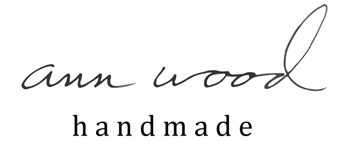In 1978, Soviet geologists discovered a family of six, in the vast and wild Siberian forest. They had been living there, in a cobbled together shack by a stream in complete isolations for 40 years. They missed World War 2. Geologist Galina Pismenskaya recalled her first encounter with the family:
“The low door creaked, and the figure of a very old man emerged into the light of day, straight out of a fairy tale. Barefoot. Wearing a patched and re-patched shirt made of sacking. He wore trousers of the same material, also in patches”
I wanted to share the story with you because the details of their life and survival are astounding – you can find the article here. And the image of the old man’s clothing grabbed me – I guess you could call it extreme mending. Mending is fascinating and I think so often beautiful.
My policy on possessions is have good things you love, not too many, and keep them for a long time. I almost never buy clothes. There are a just a couple exceptions – every once in a while I buy a smock dress from Cal Patch and wear it relentlessly. First there was this one and then last summer this one. It’s my uniform – I like having a uniform. Most of what I have was given to me and much of it I’ve had for a long time. I mend things, make do, re-use and repurpose. I like the practicality – economy and the aesthetics.
The blue jacket was given to me 15 years ago I think – I wore the sleeve edges ragged and I’m patching them with lovely old cloth from Sri Threads.

The green jacket above I’ve had for about 20 years – it has lot’s of issues but not enough to let it go – I’m patching it with gorgeous Fortuny scraps. I’m partial to flannel shirts and the red plaid above is a favorite – besides the ragged sleeves (I’m hard on sleeves) It had a big hole under one arm. Nothing says success like an underarm hole. I patched it with a 19th century dress maker’s scrap.

And the dress above – also a hand me down – is one of my most adventurous mends. The bottom of the skirt had a big section with glue or something spilled on it. I cut it out and sewed in a section from a cotton camisole. There was a little button loop and I left it at the bottom and added a button to the seam so I could pull the hem up. Pretty fancy.

And Moose – there has to be a photo of Moose and she sort of agreed to participate. She visited here all week – such a good kitten.
In other sewing news – I finished the victorian bird! 9 years after starting – but still – so good to get it done. It’s made form antique garments.


I used the crow sewing pattern for the basic shapes and construction and then did tons and tons of of applique with tattered silk scraps and added glass beads for eyes.


Do you get my free weekly-ish newsletter? There are tips and tricks, ideas, stuff to try, all the latest news and blogposts and extra stuff, just for subscribers, delivered mostly on Friday. Pretty much.





































































































